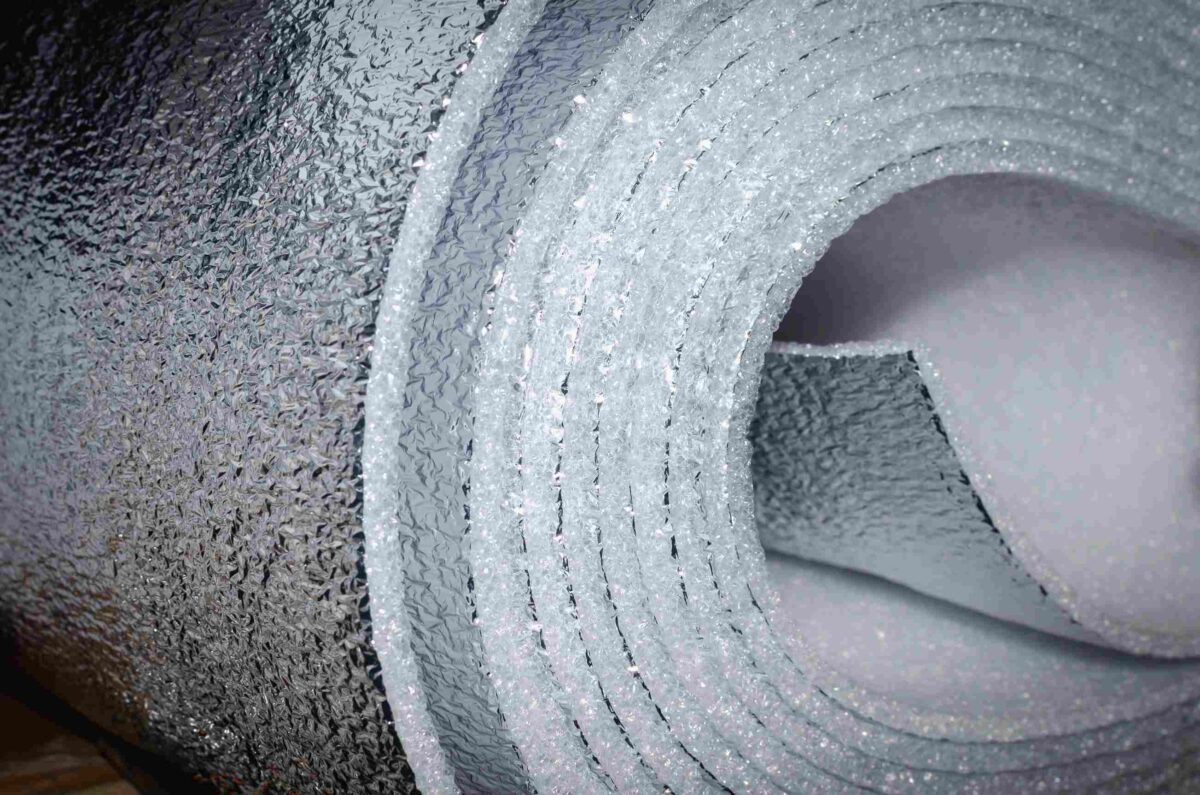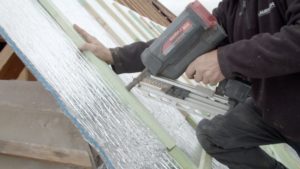How To Prevent Condensation & Sweating in Metal Buildings
Condensation in metal buildings is a phenomenon that, left unchecked, can compromise the structural integrity and comfort levels of these structures. Understanding the interplay between climate, temperature variations, and humidity is essential for maintaining a healthy, durable building environment.
What Causes Condensation in Metal Buildings?
Condensation occurs when warm, moist air comes into contact with a cooler surface, causing the moisture in the air to change from a vapor to a liquid state. In metal buildings, this often happens when there’s a significant temperature difference between the interior and exterior environments. The dew point plays a critical role in this process; it is the temperature at which air becomes saturated with moisture and begins to release it as condensation. Metal surfaces, due to their thermal conductivity, often become the canvases for this moisture, leading to potential issues if not properly managed.
Identifying the Signs of Condensation Problems
Early detection of condensation issues is vital to preventing long-term damage to metal buildings. Key signs include:
- Dripping Walls: Water droplets forming on the interior surfaces of metal panels indicate high humidity levels inside the building.
- Rust Formation: Metal components exposed to persistent moisture are prone to rust, compromising the structure’s integrity.
- Mold and Mildew Growth: Moist environments are breeding grounds for mold and mildew, posing health risks and degrading indoor air quality.
- Insulation Wetness: Wet insulation material loses its effectiveness, leading to energy inefficiencies and potential mold issues.
- Peeling Paint: Excess moisture can cause paint on metal surfaces to peel, revealing the metal underneath to potential corrosion.
Recognizing these signs early can save time and resources by addressing condensation before it escalates.
How To Prevent Condensation in a Metal Building
Preventing condensation within metal buildings requires a strategic approach focused on maintaining a balanced interior climate. This balance can be achieved through a combination of insulation, moisture control, and ventilation techniques.
Due to its multi-layered design, Aluthermo QUATTRO is an effective condensation barrier when used on the interior of a metal building. This is how it works: The two outer aluminum layers will match the temperature of the air on the side to which they are exposed, and the dewpoint temperature is then locked inside the product between those layers. Because Aluthermo QUATTRO has three interior layers of closed cell dry air, it simply does not allow condensation to form.
To bring out the full insulating potential of Aluthermo QUATTRO in protecting against energy exchange by radiation, we recommend that you preserve an air gap of at least 3⁄4 inch. To maximize the soundproofing effect, Aluthermo QUATTRO must be stretched out tight to prevent any point of contact with adjacent surfaces. The multi-layers in Aluthermo QUATTRO will prevent thermal bridging.
How to prevent sweating by insulating a metal roof from the outside:
- When insulating a new metal roof from the outside, Aluthermo QUATTRO is unrolled horizontally over the rafters, starting at the bottom.
- Use 1”x2” lath/furring/batten strips. Although Aluthermo QUATTRO is being offered in rolls with different dimensions, most common roll-size has a width of 48”.
- Attach the battens to the rafters or studs securing the Aluthermo QUATTRO in place.
- It is recommended to pre-drill the holes in the battens. This will allow for an easier and faster job. It is important to use the correct screws.
- The spacing between rafters should not be wider than 24 inch cm, and the Aluthermo QUATTRO must be stretched out tight.
- Self-drilling flat headed bugle head screws will secure your strips to the steel. These screws are designed for wood-to-metal connections.
- Make sure that the overlap 4” and seal it with Aluthermo Aluminum tape.
- Since Aluthermo QUATTRO is waterproof and airtight, there is no need for a roof lining or vapor barrier.
How to prevent sweating by insulating a metal roof from the inside (Roof and/or walls):
- Use 1”x2” lath/furring/batten strips. Although Aluthermo QUATTRO is being offered in rolls with different dimensions, most common roll-size has a width of 48”.
- Starting at the bottom, attach the battens perpendicular to the rafters or studs OC (off center) 14” apart.
- It is recommended to pre-drill the holes in the battens. This will allow for an easier and faster job. It is important to use the correct screws.
- Self-drilling flat headed bugle head screws will secure your strips to the steel. These screws are designed for wood-to-metal connections.
- Once the battens are in place, staple Aluthermo QUATTRO onto the battens.
- ALUTHERMO QUATTRO can be applied horizontally or vertically. Make sure that the overlap of Aluthermo QUATTRO should be 4” and sealed with Aluthermo Aluminum tape.
Proper Insulation Techniques
Utilizing high-quality insulation is vital for maintaining consistent interior temperatures and preventing the cold metal surface from meeting warm, moist interior air. This is particularly effective in areas where temperature variations are significant. Insulation materials should be selected based on their R-value, moisture resistance, and compatibility with metal structures.
Installation of Vapor Barriers:
Vapor barriers play a critical role in condensation prevention. These barriers, installed on the warm side of the insulation, prevent the diffusion of moist air into the insulation and the cold metal surface beyond. Materials such as polyethylene film or foil-faced polyisocyanurate are common choices for their impermeability to water vapor.
Ensuring Adequate Ventilation
Effective ventilation systems remove moisture-laden air from the building’s interior and replace it with drier air from outside. This can be achieved through natural ventilation (e.g., vents and louvers) or mechanical systems (e.g., HVAC units with humidity control). Ensuring a continuous flow of air prevents moisture accumulation and discourages condensation.
Use of Dehumidifiers
In regions with high humidity levels, dehumidifiers can significantly reduce interior moisture content. By actively removing water vapor from the air, these devices help maintain a drier environment, reducing the potential for condensation on cold metal surfaces.
Building Design Modifications
Architectural features such as overhangs, proper roof slopes, and eaves can direct water away from the building, reducing moisture ingress. Additionally, designing the building with adequate drainage and moisture barriers in the foundation can prevent ground moisture from affecting the structure.
Introducing Aluthermo Quattro Insulation: A Prime Solution for Condensation Prevention
Aluthermo QUATTRO is a revolutionary approach to preventing condensation in metal buildings, uniquely combining the properties of insulation, vapor barrier, and a reflective surface in one product. Its composition includes four layers of aluminum multi-layer insulation, thermally welded to prevent moisture penetration and enhance thermal resistance. This design reflects 96% of radiant heat, contributing to a stable interior climate and offering robust protection against condensation-related issues like mold and structural degradation.
Securing Metal Buildings Against Condensation
Recognizing the critical importance of preventing condensation for the structural integrity, energy efficiency, and comfort of metal buildings, Aluthermo QUATTRO Insulation provides an unmatched solution. It stands out for its durability, environmental safety, and ease of installation, making it an excellent choice for both new constructions and retrofit projects. Opting for Aluthermo QUATTRO Insulation ensures comprehensive moisture control and thermal performance, safeguarding your investment against the adverse effects of condensation.
For a detailed exploration of Aluthermo QUATTRO Insulation and its benefits for your metal building project, reach out to us today! This advanced solution offers sustainable protection, making it your first line of defense against condensation challenges.





